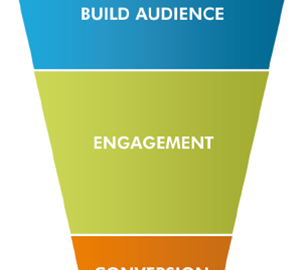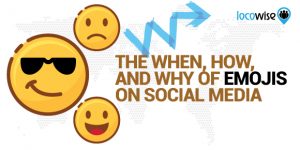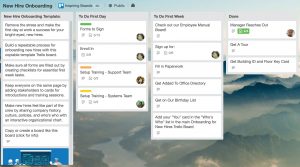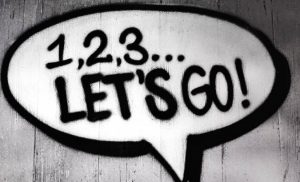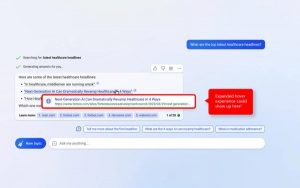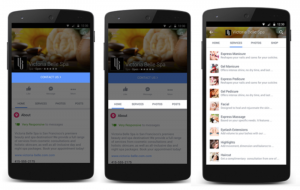We’ve seen so many companies who are competent at traditional PPC get destroyed when trying to do Facebook advertising. Let’s cover the most common mistakes and how to solve them:
- Keywords are not interests: You have keywords on Google versus interests on Facebook. In the former, someone is actively searching for something and is expressing immediate intent. In the latter, you’re targeting WHO someone is, as opposed to WHEN they are going to buy. You’re likely hitting them weeks and months before they search, so your targeting and ad copy must be different. We’ve seen PPC companies attempt to peddle translation tools that convert search keywords into Facebook interests. You might as well make chicken salad out of chicken poop– not possible. In search you know WHEN, but not WHO– in Facebook, you know WHO, but not when.
- Ads take users away from Facebook: Users who are on Facebook don’t appreciate being yanked out of their browsing experience. So don’t send them to your website– send them to your Facebook fan page.
- The ad copy is too forward: Imagine you’re having a nice dinner with a friend. Then some loud salesman interrupts your meal to pitch his wares. You’ve never seen this guy before— he’s not a friend, and you aren’t exactly interested in buying his stuff right NOW, though it’s something you might consider later. That’s what Facebook advertisers do today– they shout over the din of the other shouting advertisers, just as you see in the content networks. On Facebook, you don’t have to shout because you can microtarget and whisper quietly because…
- There isn’t multi-step engagement: Because advertisers are trying to go from impression all the way through to the sale in the same visit (yes, it works in PPC because you can target bottom of funnel terms), they fail. Instead, have one set of ads designed only to get fans of the right target audience. Then another set of ads messaging just fans. Then another set of ads for friends of fans. You wouldn’t say the same thing to someone off the street versus a friend you’ve known for a while, now would you? In Facebook PPC, you can segment your messaging by their level of engagement with you. And no, this concept is not available in the mainstream PPC tools– those software companies are still trying to jam the round peg in the square hole.

- They aren’t refreshing ads daily: In PPC you can make some ads and they can live a long time. We have ads that are years old that continue to build Quality Score. We just leave those campaigns as is– set it and forget it. In Facebook, ads burn out in days. In fact, the narrower the audience, the faster the burnout. Google ads don’t burn out because it’s a different set of users searching on the keyword each day. In Facebook, you’re hitting the same inventory over and over– especially since the average user spends 7 hours a week on Facebook and consumes dozen of pages. With no frequency capping on Facebook, you better keep your ad copy fresh– not just because you want to split test, but because you don’t want to burn out by wasting inventory on the same people over and over.
- Their analytics is sending you the wrong message: If you’re measuring conversion, odds are that it’s the unspoken last click attribution. In other words, the user may have come to your site multiple times via organic, paid search, email, social, or other sources– but only that last click (likely a branded Google click) got 100% of the credit. In paid search, there is the concept of the “assist” and the “view through conversion” to give credit to other touchpoints prior to conversion. In the world of multi-channel marketing, where consumers take in multiple inputs before making a decision, you have to measure how many Facebook visits (or even impressions) resulted in an eventual conversion later. Facebook does have a conversion tracking tool and Ads API.
- They are going for exposure: True, when you have a new page, you want to get a lot of fans. If you’re a media buyer, you might even be looking for raw CPMs. But a fan is not a fan. You need to measure what those fans are worth. And there is no one size fits all– you can’t just use the figure of $ 3.65 per fan and multiply by the number of fans you have. You have to measure how many of your fans eventually converted and then calculate back to an average fan value. If 5% of your fans eventually buy something and that something is worth $ 100, then a fan is worth $ 5 with full attribution. If you find the overlap is 33% between channels on average (3 visits on average between all channels prior to conversion), then your fan is worth $ 5 divided by 3– or $ 1.67.
There are no software packages that will save you from these pitfalls– you or someone in your organization must develop the targeting, ad copy, and landing tabs that reflect your unique selling proposition. In the same way that great traditional PPC has tight linkages between the keyword, ads, and landing page– on Facebook, you must have tight interests, ultra personal ad copy, and many interest-related posts.
Digital & Social Articles on Business 2 Community
(104)
Report Post